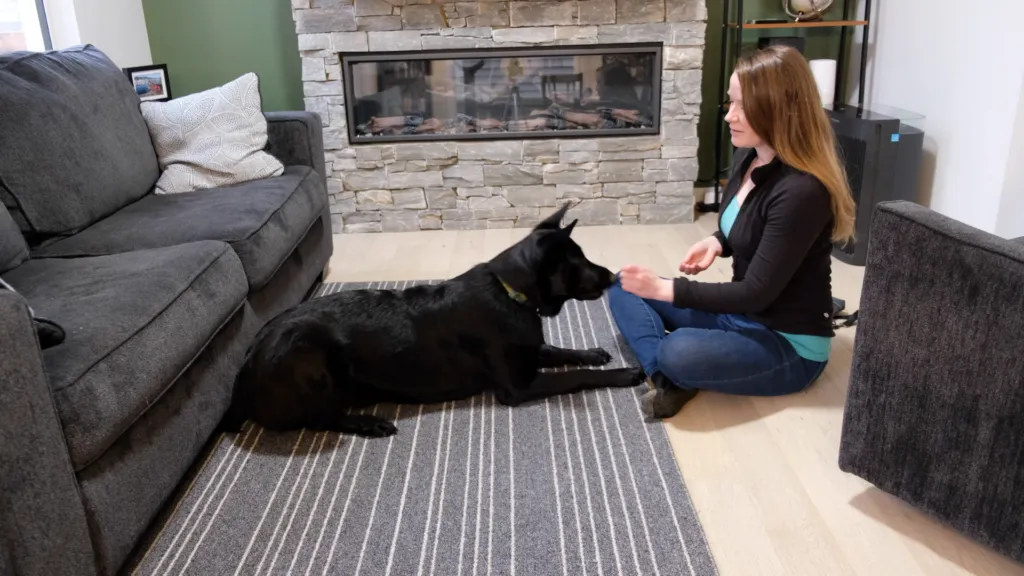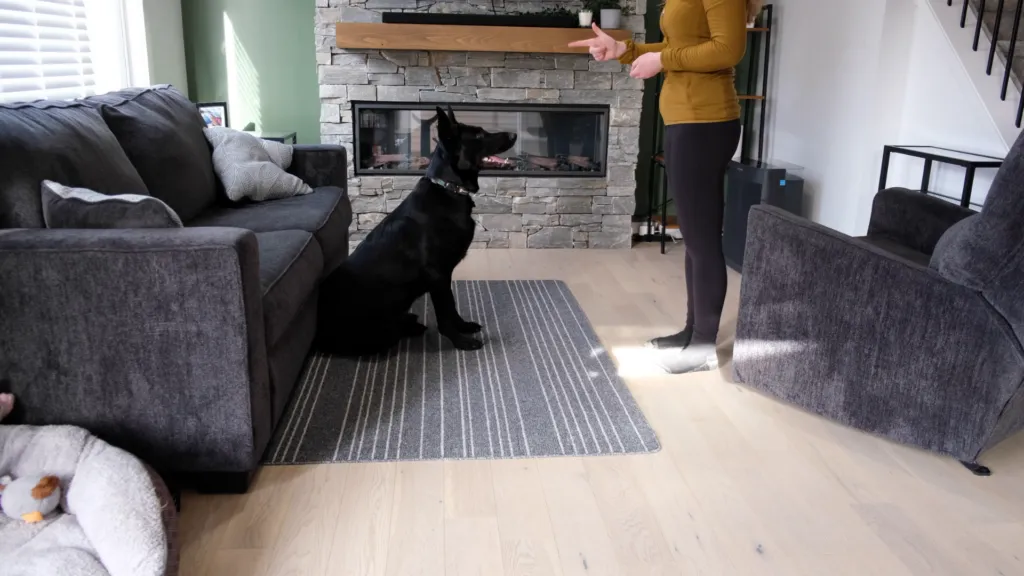Teaching your dog to “play dead” is a fun and impressive trick that will amaze your friends and family. It’s also a great way to strengthen your bond with your furry companion and introduce them to the world of lure dog training, which can be applied to teaching various other skills.
This guide will walk you through the process of training your dog to play dead in a few simple steps. You can use a verbal cue like “Bang!” or a hand signal like a mock shooting gesture. Feel free to get creative and choose something that suits your dog’s personality and your own sense of humor. Before you start, take note of your dog’s preferred side to lie down on, as this will make the training process smoother and faster.
Essential Tools for Training Your Dog to Play Dead
Before diving into the training steps, ensure you have the following:
- High-value treats that your dog loves.
- A quiet training environment free from distractions.
- Patience and a positive attitude.
- Consider if your dog has a preferred side to lay on.
Now, let’s get started!
Step 1: Luring Your Dog into Position
Begin by calling your dog to you while you’re sitting or kneeling. Ask them to sit and then lie down. Reward them generously for each step.
Next, hold a treat between your thumb and index finger, positioning it a few inches in front of your dog’s nose. This will be your lure. Move the treat slowly backward towards your dog’s shoulder, then out to the side, away from their body. Encourage your dog to follow the treat with their nose.
 Lure your dog into the play dead position with a treat
Lure your dog into the play dead position with a treat
Once your dog is lying on their side, with their head resting on the floor in the desired “play dead” position, say “Yes!” (or use a clicker if you’re clicker training) and reward them with the treat. This positive reinforcement will help them associate the position with a reward.
Repeat this process several times until your dog readily follows the treat lure into the play dead position. Remember to keep the sessions short and fun to maintain their focus and motivation. Did you know that you can use lure training to teach other tricks? Check out this comprehensive list of dog tricks and commands to expand your dog’s repertoire.
Step 2: Introducing the Verbal Cue and Hand Signal
Now that your dog understands the desired position, it’s time to introduce the verbal cue and hand signal.
Immediately before you start the treat lure sequence, say your chosen cue (e.g., “Bang!”) and make your hand signal (e.g., mock shooting). This will help your dog connect the cue with the action.
 Associate the verbal cue with the action of playing dead
Associate the verbal cue with the action of playing dead
Repeat this step 5-10 times, ensuring you say the cue and make the hand signal immediately before luring your dog into the play dead position. Consistency is key at this stage.
Step 3: Fading Out the Treat Lure
The ultimate goal is for your dog to respond to the verbal cue and hand signal alone, so you need to gradually phase out the treat lure.
Repeat the process from Step 2, but this time, don’t hold a treat in the hand you use to guide your dog. Instead, use an empty hand to make the motion, and reward them with a treat from your other hand once they complete the trick.
 Gradually phase out the treat lure
Gradually phase out the treat lure
With each repetition, make your hand motions smaller and smaller until you’re simply saying “Bang!” and making the shooting gesture, and your dog immediately falls into the play dead position. Once they can do this consistently, move on to Step 4. The key to success is positive reinforcement. Remember to reward your dog for their hard work.
Step 4: Practicing Play Dead While Standing
To make the trick more practical for real-life situations, start practicing it while you’re standing and your dog is lying down.
 Practice the trick while standing
Practice the trick while standing
Repeat the same steps as before, but remember that the difficulty has increased. You may need to initially guide them through the trick with your hand. As they improve, gradually fade out your hand motions.
Step 5: Teaching Play Dead from a Sit
This step presents a significant challenge for your dog, as it requires them to transition from a sitting position to the play dead pose.
After giving the verbal cue and hand signal, immediately use your hand to guide your dog into a down position, and then over onto their side.
 Guide your dog from a sit to the play dead position
Guide your dog from a sit to the play dead position
Reward them with a treat once they’re in the completed play dead position, with their head flat on the ground. As with the previous steps, gradually phase out your hand motions until your dog can perform the entire sequence based on your verbal and visual cues alone. Are you ready for a real challenge? Discover even more exciting possibilities with a list of dog tricks and commands.
Advanced Version: Mid-Motion Play Dead
For an extra touch of flair, you can train your dog to play dead while they’re in motion. This involves giving the cues as they run towards you, causing them to drop dramatically.
To teach this advanced version, follow these steps:
- Practice play dead from a standing position (as described in Step 4).
- Introduce slight motion by tossing a treat and asking them to play dead as soon as they eat it.
- Call your dog over to you and give the play dead cues as they approach.
Remember that tricks should be fun for both you and your dog. If your dog seems stressed or overly excited, take a break. Every dog learns at a different pace.
 Train your dog to play dead in motion for a show-stopping trick
Train your dog to play dead in motion for a show-stopping trick
Happy training!
